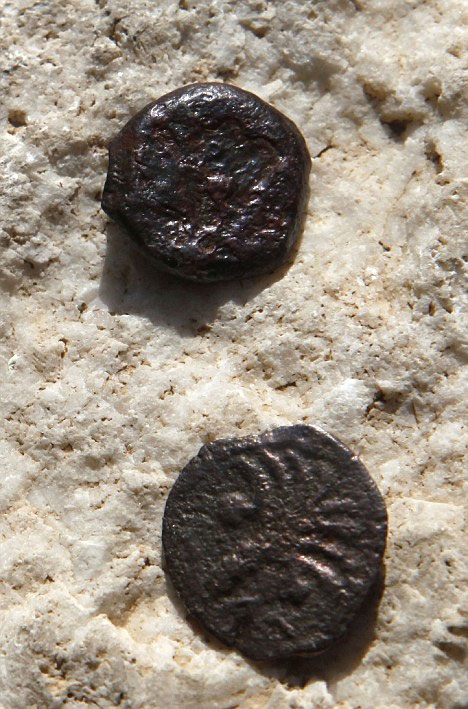The true origin of the Jerusalem Wall
The history of one of the world's most sacred sites for both Jews and Muslims will probably have to be rewritten after an unexpected discovery by Israeli archaeologists.
On November 23, an Israeli archaeological group said it had found coins that could prove the true origin of the West Wall of Jerusalem.
For centuries, it has always been believed that the wall was built by King Herod - the head of the ancient Jewish state when Jesus was born.

One of the coins was found under the Western Wall of Jerusalem.
However, information from the coins buried under the wall showed that they were cast 20 years after the death of King Herod in the 4th year BC. Thus, this work is likely to be built by his successor.
The owner of the coins identified as Flavius Josephus, a Jewish general, who later became a Roman historian.
In some of his documents, he wrote about the Jewish rebellion against Rome, destroying the Temple in 70 AD and the construction of the Temple Mount of King Agrippa II - Herod the great grandson.
This information plays an important role in providing 'first archaeological evidence to show that part of the fence does not belong to Herod' , archaeologist Aren Maeir from the University of Bar - Ilan plays expression.
The western wall (aka the Wailing Wall) - a remnant of the ancient wall surrounding the Jewish temple, is located west of the Temple Mount in the ancient city of Jerusalem.
According to the Tanakh, the Solomon Temple was completed at the top of Temple Mount in the 10th century BC and was destroyed by the Babylonian army in 586 BC. 70 years later, the Second Temple was rebuilt. Around 19 BC, Herod the Great began a great work here. He extended the area into a mound, or a large ground. Today, the Wailing Wall is a remnant of this ground and it is believed that all was built by Herod the Great.
- The ad in the holy city of Jerusalem stirred up the prophecy
- Jerusalem Citadel - Jerusalem
- 12 reasons to arise love for Jerusalem
- The wall of gum is famous in America
- Explain the strange syndrome of Jerusalem psychosis in Palestine
- The King of Jerusalem - the terrifying hero in history
- Gold treasure excavation in Jerusalem
- The 'missing' section of the Great Wall has been revealed after four decades
- Discovered an ancient tank of 1,800 years in Jerusalem
- The student successfully built Wall-E Robot from the material collected at the landfill
- The school is mysteriously cutting Jordan off
- Vietnam wall - Huge wall in Son Doong cave
 Discovered an ancient centipede fossil 99 million years old
Discovered an ancient centipede fossil 99 million years old Discovered bat-like dinosaurs in China
Discovered bat-like dinosaurs in China Discovered a 200-year-old bronze cannon of the coast
Discovered a 200-year-old bronze cannon of the coast Discover 305 million-year-old spider fossils
Discover 305 million-year-old spider fossils